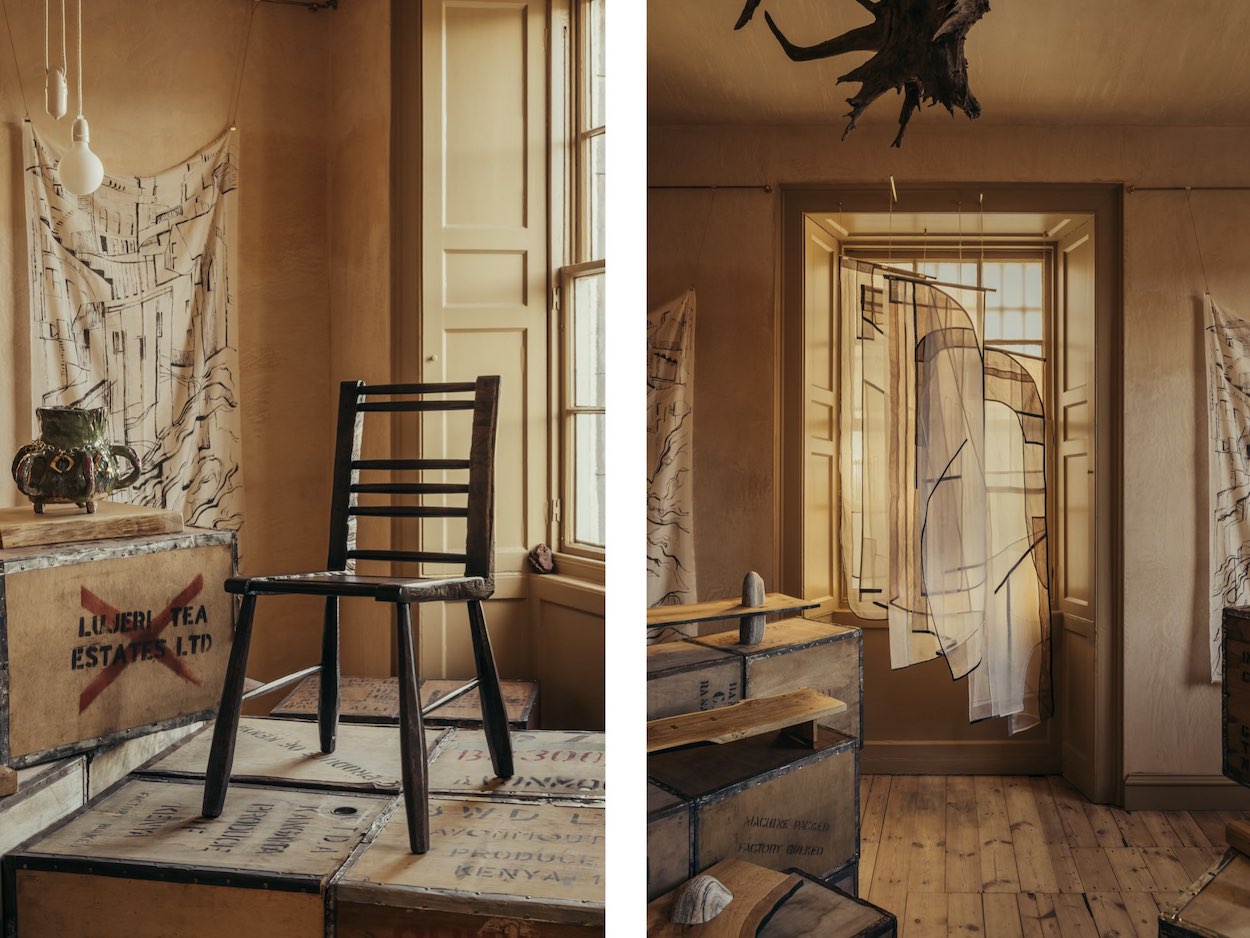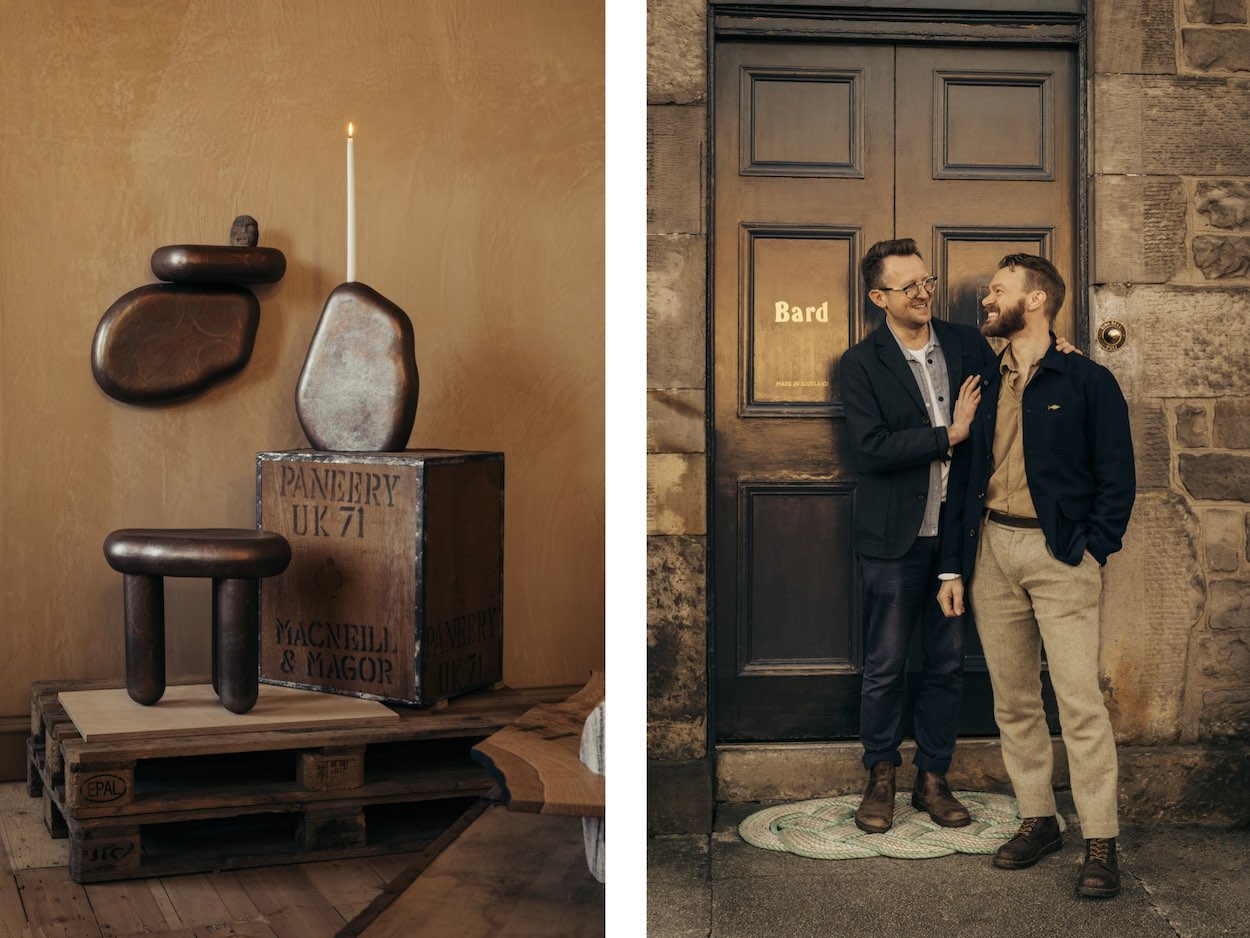Bard, a recent addition to the former port town Leith, threw open its doors in Scotland’s oldest customs house just over a year ago. At the opening preview, co-founders and husbands Hugo Macdonald and James Stevens told guests (Surface among them) of uprooting from London during the pandemic and settling in Edinburgh. There, they dreamed of opening a space purpose-built for showcasing Scottish craft. The country has dedicated galleries and museums, of course, but Macdonald and Stevens envisioned “something that wasn’t [a collection of] objects on plinths for people to look at and view as art, and something that wasn’t a gift shop, either.” The duo spent a whirlwind summer touring the country’s mainland and islands, surveying the state of design by meeting and observing 60 makers.
“The storytelling at the heart of all these people and things is really what we’re interested in,” Macdonald told Surface. A year later, with the opening of their inaugural exhibition “The Grit and the Glamour,” they stayed true to their founding vision. Featuring 21 makers and artists from all over Scotland, the group show celebrates the inherent mess, difficulty, and courage of transcending trends in pursuit of craft. There are no plinths in sight—instead, reclaimed tea crates nod to Leith’s seaport roots and display an assortment of wooden and clay furniture, glass sculpture, wool and silk textiles, and bio-plastic sculpture.
While Bard celebrates what Macdonald calls “interpretations of Scottishness,” neither it nor its debut exhibition are a nationalistic endeavor. Each maker lives and works in the country, but as a group they reflect a diversity of perspectives. Juli Bolaños-Durman’s family of salvaged scientific glass vessels, for example, represents the larger importance of reclamation in her process and what she calls “a simple but important gesture in our throwaway culture.” Jack Brindley’s ochre-hued Haptic Light was inspired by an early Frank Lloyd Wright window design for factories, but brings warmth and ruggedness to the material with the way it appears to be lodged in boulders from the Isle of Skye.
Elsewhere, Marie Bruhat’s Fair Isle wool throws, Frances Priest’s encaustic ceramic tile trivets, and Marc Sweeney’s monolithic pepper bio-resin and ceramic pepper grinder all nod to changing ideas of luxury and Scotland’s erstwhile industries devoted to “making beautiful things for wealthy people,” to quote Sweeney. Now, thanks to endeavors like Bard, those traditions live on and are more accessible than ever.
Sweeney, a Loch Lomond–based product designer, reflected on how craft traditions live on today in the exhibition’s catalog. “It was hard labor making luxury goods; from shipyards building yachts to people spinning silk. This region had a skilled working-class workforce,” he said in a conversation with Macdonald. “Most of these industries and skills are long gone. I’m influenced by where I’m based and what came before, but for me, it’s not about preserving heritage, it’s about designing or making in a relevant way for the present and hopefully the future.”
In an industry that largely anonymizes its actual makers, Bard’s vision of slow design feels refreshing.



